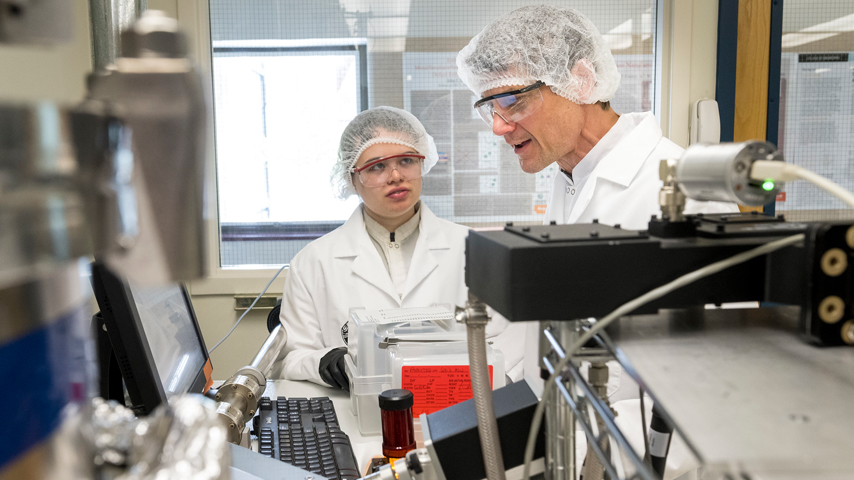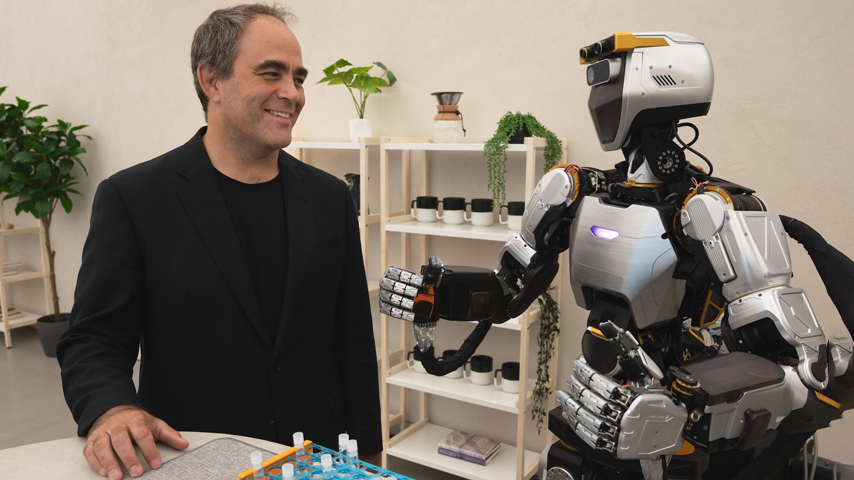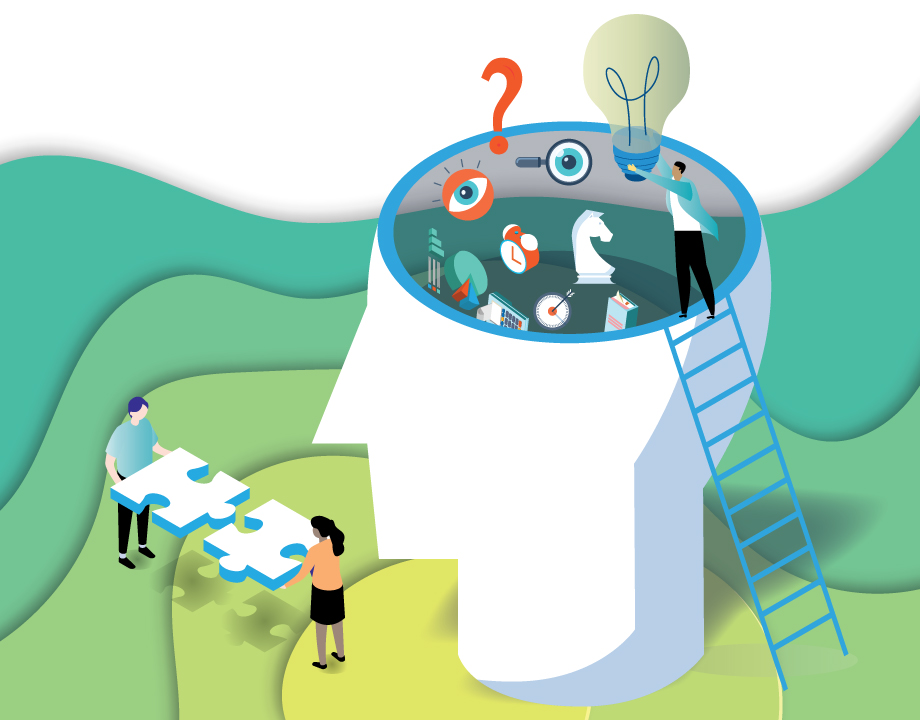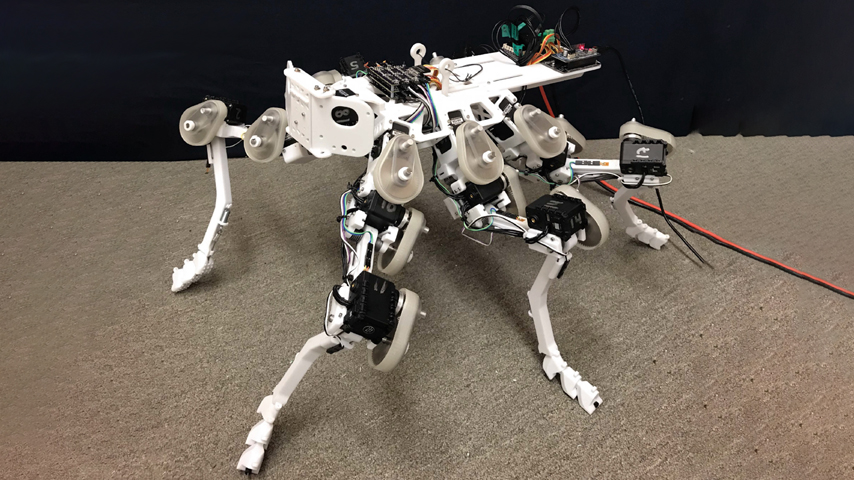A Battery in the Eye
A Battery in the Eye
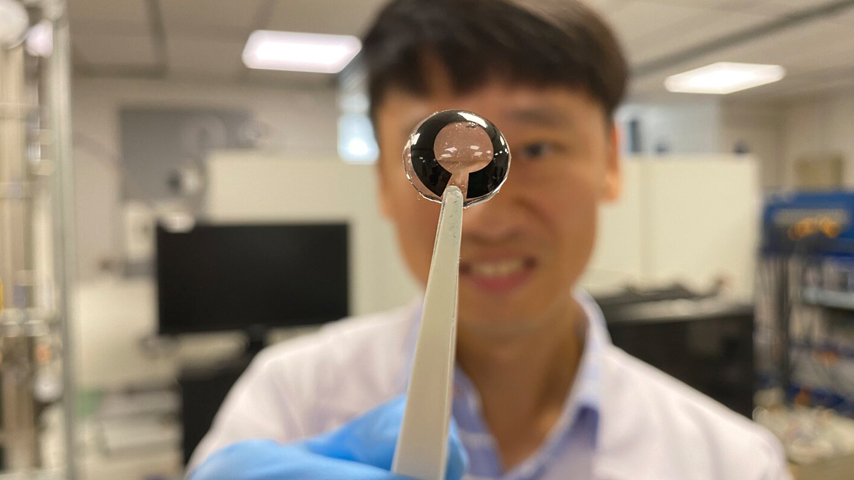

An ultra-thin battery that uses saline solution to power up can one day be used in smart contact lenses.
Seok Woo Lee had been working on battery technology for years when he saw Mission Impossible, Rogue Nation. One of the characters wore a contact lens that allowed him to wirelessly transmit what he was seeing.
“I was impressed with that,” said Lee, a professor at Nanyang Technological University’s School of Electrical and Electronic Engineering in Singapore. “And I started to think about what I can do for the smart contact lens application and then how to supply power to the contact lens.”
The problem was not a simple one. Currently, there are two ways to charge our electronic devices, wirelessly and plugged in, and neither works nicely in the eye. Wireless charging requires an external coil—not something anyone wants resting on their windows to the soul—and though rare, lithium-ion batteries have been known to explode.
“Nobody wants to have such an accident on your eyeball,” said Lee.
Become a Member: How to Join ASME
The flammable part of a lithium-ion battery is the liquid electrolyte. If that were replaced with something else, perhaps a contact with a battery could sit safely on the cornea. “Then I found that a teardrop is a solution of saline water containing sodium chloride and some potassium chloride,” said Lee. “I have worked on a similar system, a battery that works with seawater.”
Before long Lee created an ultra-thin battery with electrodes that sit on either side of the pupil like a pair of parentheses. The cathode is made of copper hexacyanoferrate and the anode is polypyrrole, a conducting polymer. The contact comes in at 90 micrometers—less than half the thickness of typical contacts—with the strength and flexibility to survive repeated daily usage.
And it charges on tears. Specifically, the glucose in tears, including the fluid that bathes the eye constantly.
But the body’s natural eye wash is only enough to give the battery a bit of a boost throughout the day. Anything more would require an extended weep-fest or onion-chopping session. “I had a calculation about it,” said Lee. “You would have to cry a lot, and, also, you would need a lot of time.” For a full-on charge, the contacts must sit in a glucose solution overnight.
To test for toxicity, Lee and his colleagues coated the battery with living cells. It had no negative effect on them. The paper that Lee co-authored, “A tear-based battery charged by biofuel for smart contact lenses,” appeared in Nano Energy this year.
Lee and his team have powered a memory chip with the battery and he now is collaborating with low-power CMOS device researchers to find other applications. As the battery runs on glucose, one possible use for its low power/low voltage output would be a glucose monitor. Similarly, the contact could have other sensors to monitor eye health.
Once he’s come up with a suitable device that can be powered by the battery, Lee will test the contact on living creatures. “We need to pass a lot of steps to get approval,” said Lee. “So, I think developing the hardware—the device—is the first step.”
So, it’ll be a while before our spies broadcast live from behind enemy lines, ala Mission Impossible. But impossible it’s not.
Michael Abrams is a technology writer in Westfield, N.J.
“I was impressed with that,” said Lee, a professor at Nanyang Technological University’s School of Electrical and Electronic Engineering in Singapore. “And I started to think about what I can do for the smart contact lens application and then how to supply power to the contact lens.”
No simple solution
The problem was not a simple one. Currently, there are two ways to charge our electronic devices, wirelessly and plugged in, and neither works nicely in the eye. Wireless charging requires an external coil—not something anyone wants resting on their windows to the soul—and though rare, lithium-ion batteries have been known to explode.
“Nobody wants to have such an accident on your eyeball,” said Lee.
Become a Member: How to Join ASME
The flammable part of a lithium-ion battery is the liquid electrolyte. If that were replaced with something else, perhaps a contact with a battery could sit safely on the cornea. “Then I found that a teardrop is a solution of saline water containing sodium chloride and some potassium chloride,” said Lee. “I have worked on a similar system, a battery that works with seawater.”
Before long Lee created an ultra-thin battery with electrodes that sit on either side of the pupil like a pair of parentheses. The cathode is made of copper hexacyanoferrate and the anode is polypyrrole, a conducting polymer. The contact comes in at 90 micrometers—less than half the thickness of typical contacts—with the strength and flexibility to survive repeated daily usage.
And it charges on tears. Specifically, the glucose in tears, including the fluid that bathes the eye constantly.
Continuous charge
But the body’s natural eye wash is only enough to give the battery a bit of a boost throughout the day. Anything more would require an extended weep-fest or onion-chopping session. “I had a calculation about it,” said Lee. “You would have to cry a lot, and, also, you would need a lot of time.” For a full-on charge, the contacts must sit in a glucose solution overnight.
To test for toxicity, Lee and his colleagues coated the battery with living cells. It had no negative effect on them. The paper that Lee co-authored, “A tear-based battery charged by biofuel for smart contact lenses,” appeared in Nano Energy this year.
More for You: Battery-Based Desalination Made Possible
The current battery produces several hundred microwatts, not enough to power a camera or a wireless transmitter just yet (Bluetooth requires about a watt). So, the next step is finding components that can be powered with what the battery has to offer.Lee and his team have powered a memory chip with the battery and he now is collaborating with low-power CMOS device researchers to find other applications. As the battery runs on glucose, one possible use for its low power/low voltage output would be a glucose monitor. Similarly, the contact could have other sensors to monitor eye health.
Once he’s come up with a suitable device that can be powered by the battery, Lee will test the contact on living creatures. “We need to pass a lot of steps to get approval,” said Lee. “So, I think developing the hardware—the device—is the first step.”
So, it’ll be a while before our spies broadcast live from behind enemy lines, ala Mission Impossible. But impossible it’s not.
Michael Abrams is a technology writer in Westfield, N.J.
